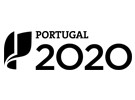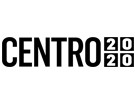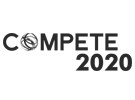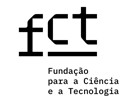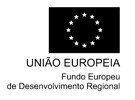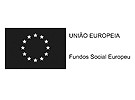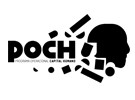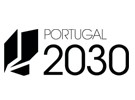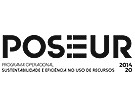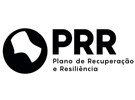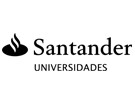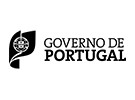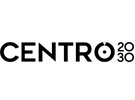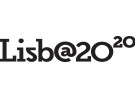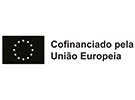



Publication in the Diário da República: Aviso n.º 10753/2023 de 01/06/2023
5 ECTS; 1º Ano, 1º Semestre, 52,50 TP , Cód. 65892.
Lecturer
- Pedro Reis (1)(2)
- Mario Ferreira (2)
(1) Docente Responsável
(2) Docente que lecciona
Prerequisites
N/A
Objectives
On completion of this course, students should be able to:
1- Identify and describe the anatomical structure of the main systems of the human body, including the skeletal, muscular, nervous, cardiovascular, respiratory, digestive, urinary and endocrine systems.
2- Understand the physiology of the different systems of the human body, analyzing the basic mechanisms that regulate their functions.
3- Explain the relationship between the various body systems, understanding how they work together to maintain homeostasis.
4- Distinguish the basic processes of physiological regulation, such as neural and hormonal control mechanisms.
5- Relate the fundamentals of anatomy and physiology to everyday situations and basic human movement activities.
6- Apply basic concepts of anatomy and physiology to the interpretation of vital signs and normal body functions.
7- To have a solid base of knowledge to support more advanced disciplines in the field of sport.
Program
In order to achieve the general and specific objectives of the course, it will have the following content:
1. General organization of the human body
1.1. Basic notions of cellular physiology
1.1.1. General organization of the eukaryotic cell
1.1.1.1. Cell nucleus
1.1.1.2. Cytoplasm and cytoplasmic organelles
1.1.2. Plasma membrane (cell membrane)
1.1.3. Movement through the cell membrane
1.1.3.1. Passive transport
1.1.3.2. Facilitated diffusion
1.1.3.3. Active transport
1.2. Tissues
1.2.1. Connective tissue
1.2.2. Muscle tissue
1.2.3. Nervous tissue
1.2.4. Epithelial tissue
1.3. General organization of systems
1.3.1. Levels of structural organization of the human organism
1.3.2. Systems of the human organism
1.4. Anatomical terminology and body plans
1.4.1. Standard anatomical position
1.4.2. Body plans
1.4.3. Directional terms
2. Support and movement systems
2.1. Osteology
2.1.1. Bone anatomy of the head, spine and thorax
2.1.2. Bone anatomy of the upper limb
2.1.3. Bone anatomy of the lower limb
2.2. Arthrology
2.2.1. Types of joints
2.2.2. General constitution of the movable joint
2.2.3. Morphological and functional classification of movable joints
2.2.4. Joint movements
2.3. Myology
2.3.1. Skeletal muscle physiology
2.3.1.1. General structure of skeletal muscle
2.3.1.2. Skeletal muscle fiber structure
2.3.1.3. Skeletal muscle contraction
2.3.1.4. Types of muscle contractions
2.3.1.5. Skeletal muscle energy metabolism
2.3.1.6. Types of muscle fibers
2.3.2. Trunk muscle anatomy
2.3.3. Muscular anatomy of the upper limb
2.3.4. Muscular anatomy of the lower limb
3. Movement control and coordination systems
3.1. Nervous system
3.1.1. General organization of the nervous system
3.1.2. Structural and functional organization of the central nervous system
3.1.2.1. Spinal cord
3.1.2.2. Brain
3.1.3. Structural and functional organization of the peripheral nervous system
3.1.4. Receptors and sensitivity pathways
3.2. Neuromuscular coordination mechanisms
3.2.1. Intramuscular coordination
3.2.2. Intermuscular coordination
4. Internal organic systems
4.1. Homeostasis
4.1.1. Homeostatic mechanisms
4.2. Autonomic nervous system
4.2.1. General organization of the autonomic nervous system
4.2.2. Sympathetic division
4.2.3. Parasympathetic division
4.3. Endocrine system
4.3.1. General characterization of the endocrine system
4.3.2. Endocrine glands, hormones and target organs
4.4. Organic systems
4.4.1. Cardiovascular system
4.4.1.1. Anatomy and physiology of the heart
4.4.1.2. Cardiac mechanical cycle
4.4.1.3. Vascular system, general structure of blood vessels
4.4.1.4. Systemic and pulmonary circulation
4.4.2. Respiratory system
4.4.2.1. Organs of the respiratory system
4.4.2.2. Respiratory mechanics
4.4.2.3. Exchange and transport of respiratory gases
4.4.2.4. Regulatory mechanisms of respiratory activity
4.4.3. Digestive system
4.4.3.1. Anatomy of the digestive system
4.4.3.2. Functional organization of the digestive system
4.4.3.3. Physiological processes in the digestive tract
4.4.3.4. Regulation of digestion
4.4.4. Urinary system
4.4.4.1. Urinary tract
4.4.4.2. Kidney anatomy
4.4.4.3. Glomerular filtration
4.4.4.4. Regulatory functions of the kidney
Evaluation Methodology
1 Continuous Evaluation
Assessment procedure characterized by two written tests.
The student is considered approved when the final result from the arithmetic mean of the tests ((a+b)/2=x) is equal to or greater than 9.5 values.
Participation in this evaluation process is subject to a minimum rating of 7.5 values in both tests. It is mandatory for the student to attend at least two thirds of the scheduled classes.
Students who are not successful in the continuous evaluation process will be able to take the exam in the following seasons, as provided for in the assessment regulations.
2 Exam Evaluation
Access to the regular, appeal and special exams follows the provisions of the current assessment regulations.
In an exam, written or oral, the student's knowledge of all the syllabus of the curricular unit will be assessed.
The exam, at any time, consists of a written test and an oral test, with the minimum score for admission to the oral test being 7.5 values.
The oral test will take place 48 hours after the publication of the written test score, considering only working days for the period.
The student's final classification in the exam will result from the following formula: Final Classification = [(Written test)+(Oral test)/2].
The student is considered to have passed the exam if the final classification is equal to or greater than 9.5 values.
Bibliography
- Espanha, M. e Armada da Silva, P. (2019). Sistemas Orgânicos Internos: Anatomofisiologia do Sistema Nervoso Autónomo, Sistema Endócrino e Aparelhos Digestivo, Respiratório, Cardiovascular e Urinário. Lisboa: FMH
- Pezarat Correia , P. e Espanha, M. (2010). Aparelho Locomotor: Anatomofisiologia dos Sistemas Nervoso, Osteoarticular e Muscular. (Vol. 1). Lisboa: FMH
- Pezarat Correia, P. (2016). Aparelho Locomotor: Função Neuromuscular e Adaptações à Atividade Física. (Vol. 2). Lisboa : FMH
- Tate, P. e D. Stephens, T. e R. Seely, R. (2005). Anatomia e fisiologia. Lisboa: Lusodidacta
Teaching Method
The following methods will be used to achieve the specific and general objectives of the course:
Oral presentation of content using audiovisual media.
Observation and interpretation of anatomical models.
Research tasks.
Software used in class
N/A
